The 14-day Manaslu Trek is an extraordinary trekking adventure that immerses you in the raw, untouched beauty of the Nepal Himalayas. Located in a more remote and less-explored region of Nepal, the Manaslu Circuit Trek offers trekkers a truly authentic Himalayan experience. This trek is perfect for those seeking both adventure and cultural discovery, with the stunning views of Mount Manaslu (the eighth highest mountain in the world) as the crowning achievement of the journey.
For trekkers looking to explore a less-crowded alternative to the popular Annapurna Circuit Trek or Everest Base Camp Trek, the Manaslu trek offers a pristine route that takes you through isolated villages, lush forests, and rugged terrain. Along the way, you’ll encounter diverse landscapes, from subtropical valleys to alpine meadows, all while being surrounded by majestic peaks and snow-capped mountains.
What sets the Manaslu Circuit apart is its unique combination of adventure, culture, and natural beauty. The trek offers incredible opportunities for cultural immersion as you traverse through traditional Tibetan villages, Buddhist monasteries, and quaint settlements that remain largely untouched by modern development. Each village along the trail presents a glimpse into the lives of the indigenous people, from the Sherpas to the Tibetan-influenced communities, creating a rich cultural experience that enhances the physical challenge of the trek.
The 14-day itinerary ensures a proper acclimatization schedule, which is vital for a safe and successful trek in high-altitude environments. Gradually gaining elevation day by day, you’ll trek from lower-altitude villages to the majestic Larkya La Pass, which sits at an altitude of 5,160 meters, offering panoramic views of Mount Manaslu, Himalchuli, and Larkya Peak. With plenty of time for acclimatization, including rest days like in Samagaun, you’ll be able to maximize your trekking experience while staying healthy.
For trekkers who are passionate about nature, culture, and mountain views, the Manaslu Circuit Trek offers an unparalleled experience. It is a perfect blend of challenging terrain, high-altitude trekking, and rich cultural exposure. The trail also offers unbelievable views of snow-capped mountains, glaciers, and high passes, making it an awe-inspiring journey.
The 14-day Manaslu trek is an ideal option for those who want to experience an authentic, off-the-beaten-path adventure in the Himalayas, away from the crowds of more popular trekking routes. Whether you’re an experienced trekker or an adventure seeker, the Manaslu Circuit offers a unique challenge that will leave you with memories to last a lifetime. Book your trek today with trusted trekking experts like the Alpine Club of Himalaya, who ensure a safe, well-guided, and unforgettable experience.
If you’re looking to conquer the Manaslu Circuit Trek, Alpine Club of Himalaya offers comprehensive trekking packages to ensure your trip is safe, comfortable, and filled with breathtaking moments. From arranging permits to organizing transportation, their professional services will make your trekking experience smooth and enjoyable.
How to Get to the Manaslu Circuit?
To reach the Manaslu Circuit, public buses depart daily from Kathmandu to Arughat-MachhaKhola between 6:00 AM and 7:00 AM. However, if you’re traveling during the Dashain festival (typically in late September or October), it can be challenging to find a seat. This is because over two million people leave Kathmandu Valley to visit their families in the villages, leading to overcrowded buses. It’s difficult to get a seat if you book last-minute during this busy period.
Outside of the festival time, buses to Arughat are readily available, and booking a seat is not an issue. If you’re traveling with a group of 3 to 4 people or more, renting a private jeep is a great option. It’s more comfortable and offers a smoother journey, though it costs around USD 230 per jeep, which can be shared among participants.
Taking a private jeep provides a more convenient and comfortable travel experience to start your Manaslu Circuit Trek.
Difficulty Level
The Manaslu Circuit Trek (13 Days) is considered moderately challenging, suitable for trekkers with a reasonable level of fitness and previous trekking experience. The trek involves high-altitude walking, with Larkya La Pass (5,160m) being the most demanding due to its altitude and steep ascent. While no technical climbing skills are required, trekkers should have stamina, endurance, and be prepared for changing weather and terrain. Proper acclimatization and preparation are essential to ensure a safe and enjoyable experience.
Physical Fitness and Requirements
To complete the Manaslu Circuit Trek, trekkers should have a moderate level of physical fitness. Cardiovascular exercises like hiking, running, or cycling are excellent for building stamina. The trek involves daily walks of 5 to 7 hours, with the most challenging day being the ascent to Larkya La Pass. Familiarity with uneven terrain and preparation for high-altitude conditions will help minimize the risk of altitude sickness and enhance your trekking experience.
Environment
The Manaslu Circuit offers an incredibly diverse environment, from lush subtropical forests to alpine meadows and rugged mountain landscapes. The trail passes through the Manaslu Conservation Area, home to a variety of wildlife such as snow leopards and Himalayan tahr. You’ll walk through rhododendron forests, oak woodlands, and cross traditional villages and terraced fields, all set against the backdrop of towering snow-capped peaks and pristine rivers.
Climate and Weather
The Manaslu Circuit Trek experiences diverse weather conditions due to varying altitudes. Lower elevations are mild and temperate, with daytime temperatures ranging from 15°C to 20°C. As you ascend, temperatures drop, especially in alpine zones where it can dip below freezing, particularly at night and in the early morning. Be prepared for fluctuating weather, including possible snow and rain, especially at higher altitudes like Larkya La Pass.
Meals
Meals on the Manaslu Circuit Trek typically include hearty, locally prepared dishes like dal bhat (lentil soup with rice), noodles, pasta, and potatoes for energy. Some teahouses also serve Western meals such as pizza, sandwiches, and pancakes. However, meals at higher altitudes tend to be simpler due to limited resources. Fresh fruits and vegetables may be scarce, but staples like rice, lentils, and bread are available throughout the trek.
Drinking Water
Safe drinking water is available through purified water stations at teahouses or filtered from natural sources along the Manaslu Circuit Trek. It’s advisable to carry water purification tablets or a filter to ensure the water is safe to drink. Avoid untreated water from streams or rivers to prevent waterborne illnesses. Bottled water is available in most teahouses, though it may be less accessible at higher elevations. Staying hydrated is essential for maintaining energy levels and supporting acclimatization.
Accommodation
Accommodation along the Manaslu Circuit Trek is provided in teahouses or local lodges, which offer basic but comfortable rooms with simple bedding. At higher altitudes, the rooms may be colder and more basic, with fewer amenities. It’s recommended to book in advance during peak trekking seasons. Teahouses offer a cozy, communal atmosphere, where trekkers can relax, enjoy local meals, and share stories with fellow travelers.
Travel Insurance
Travel insurance is strongly recommended for the Manaslu Circuit Trek to cover emergencies such as medical issues, evacuation, or trip cancellations. Ensure the policy includes coverage for high-altitude trekking and emergency evacuations by helicopter if necessary. It should also cover lost baggage, personal accidents, and delays. Carefully check the terms before purchasing your insurance to ensure full coverage.
Passport and Visa
A valid passport with at least six months of validity is required for the Manaslu Circuit Trek. You will need a tourist visa, which can be obtained at the Nepalese embassy before arrival or on arrival at Kathmandu’s Tribhuvan International Airport. The visa is typically issued for 15, 30, or 90 days, depending on your travel plans. Ensure your visa covers the full duration of your trek, and carry a photocopy of your passport and visa for safety.
TIMS and Permits
To trek in the Manaslu Circuit, you will need specific permits. These include the Manaslu Restricted Area Permit (RAP), the Manaslu Conservation Area Permit (MCAP), and a Trekking Information Management System (TIMS) card. These permits can be obtained in Kathmandu either through a trekking agency or independently at the Nepal Tourism Board. Ensure you have all necessary permits before starting your trek, as it is illegal to trek in the region without them.
Best Time to Trek
The best time to visit the Manaslu Circuit Trek is during the pre-monsoon (spring) season from March to May and the post-monsoon (autumn) season from September to November.
· Spring (March to May)
Spring is one of the most popular times for trekking the Manaslu Circuit. The weather is mild, with daytime temperatures ranging from 10°C to 15°C, and the nights are cool but manageable. This season also offers stunning views of blooming rhododendron forests and other wildflowers, adding vibrant colors to the landscape. The skies are usually clear, providing excellent visibility of the surrounding peaks.
· Autumn (September to November)
Autumn is the peak trekking season in Nepal. The weather is stable and dry, with daytime temperatures ranging from 15°C to 20°C, and cold nights at higher altitudes. The clear skies provide panoramic views of the Himalayas. This season is ideal for trekking because the trails are not too muddy, and the risk of landslides is minimal. However, it can be busy, especially in popular trekking areas, so it’s best to book your trek in advance.
· Avoiding Monsoon (June to August)
The monsoon season from June to August is generally not recommended for trekking the Manaslu Circuit, as heavy rains can lead to landslides, muddy trails, and increased risk of altitude sickness. The region’s remoteness makes it harder to find shelter during bad weather, so it’s better to avoid trekking during this time.
In summary, March to May and September to November offer the best conditions for trekking the Manaslu Circuit, with favorable weather, clear views, and a comfortable trekking experience.
Weather Challenges
- Cold Temperatures: As you ascend higher into the Himalayas, temperatures can drop drastically, especially at night. In higher altitudes like Larkya La Pass, temperatures can fall below freezing, even in the trekking season (spring and autumn).
- Altitude-related Weather: The weather becomes unpredictable at high altitudes. Snowstorms, heavy rain, and strong winds are common, especially near the Larkya La Pass. These can create delays and make the trek more challenging.
- Variable Conditions: The weather in the lower regions can be warm and humid, while temperatures drop as you gain altitude. This shift can result in sudden weather changes, such as cloudy skies, fog, and unexpected rain in the lower valleys, while clear skies and sunny weather dominate the higher altitudes.
- Monsoon Season (June to September): The summer monsoon season brings heavy rain and risks of landslides and mudslides, particularly on lower trails. It’s best to avoid trekking during this time for safety reasons.
- Wind Chill at High Altitudes: High winds can increase the feeling of cold at high altitudes, making it difficult to trek, particularly on exposed ridges and passes like Shy-La and Larkya La.
- Risk of Snow and Ice: Especially in winter months (December to February), certain areas can become icy, particularly on passes and steep sections. Slippery conditions can increase the difficulty of the trek and demand caution.
Proper preparation, such as layering clothing, bringing windproof gear, and staying informed on weather forecasts, is essential to overcome the weather challenges of the Manaslu trek.
How to Prepare for Weather Challenges:
- Proper Clothing: Layer your clothing to adjust to temperature changes. Include base layers, thermal insulation, waterproof outer layers, gloves, and hats.
- Footwear: Sturdy, waterproof boots with good grip are essential to navigate muddy or snowy trails.
- Rain Gear: A waterproof jacket, pants, and pack cover are essential during the monsoon season or unexpected rain.
- Trekking Poles: Help with stability on snowy, icy, or uneven terrain.
- Hydration & Snacks: Keep hydrated and pack high-energy snacks to maintain energy levels in challenging conditions.
- Acclimatization: Take it slow and allow your body to adjust to higher altitudes to avoid altitude sickness.
Being aware of these potential weather challenges and preparing accordingly can ensure a safer and more enjoyable Manaslu Circuit Trek experience.
Guides
Hiring a guide for the Manaslu Circuit Trek is highly recommended due to the remote and challenging nature of the trail. A professional guide ensures that you stay on the correct path, particularly in areas with unclear trail markings or difficult terrain. They offer expert knowledge of the local culture, history, and customs, enhancing your overall trekking experience. Guides are also trained in first aid and emergency response, ensuring your safety in case of altitude sickness or other health issues. Additionally, they assist with managing permits and logistics, including accommodations and meals, allowing you to focus on the trek without worrying about the details. Their presence provides valuable insights into the region and ensures a smoother, more enriching journey.
Porters
A porter is an essential part of the trekking experience on the Manaslu Circuit, as they carry your heavy gear, reducing the physical burden on you. Porters typically carry up to 20-25 kg, which allows trekkers to walk with only a lighter daypack. This makes the trek more comfortable and manageable, especially over long distances and difficult sections. In addition to carrying gear, porters are often local to the region and familiar with the terrain, offering additional support and guidance along the trail. They also provide a cultural connection, sharing insights into the local way of life. Hiring a porter not only benefits your trek but also supports the local economy and helps ensure fair wages and safe working conditions for those employed in the industry.
Why You Should Hire a Guide and Porter for the Manaslu Circuit Trek
Hiring both a guide and a porter for the Manaslu Circuit Trek enhances your trekking experience significantly. Guides ensure you’re well-prepared for altitude challenges, unpredictable weather, and the complexities of the trail, while porters make the physical load lighter, allowing you to fully enjoy the trek without the strain of heavy gear. Together, they provide safety, cultural insight, and logistical support, making the trek more enjoyable and manageable. Additionally, hiring local guides and porters ensures that you’re supporting the local community and promoting ethical, sustainable tourism practices in the region.
Restrictions and Permits for the Manaslu Circuit Trek
The Manaslu Circuit Trek is a restricted area trek, meaning there are specific permits and regulations in place to preserve the region’s natural environment and cultural integrity. Here are the key restrictions and permits required to trek in the Manaslu region:
1. Manaslu Restricted Area Permit (RAP)
Since the Manaslu Circuit lies in a restricted zone, trekkers are required to obtain the Manaslu Restricted Area Permit (RAP). This permit is mandatory for all trekkers and can only be obtained through a registered trekking agency in Nepal. The RAP helps to control the number of trekkers entering the region, preserving its remote and pristine nature. The cost of the permit depends on the time of year:
- From September to November: $100 per week.
- From December to August: $75 per week. The RAP is issued for a specific time period, and if you plan to extend your stay in the region, you will need to arrange for an extension through your agency.
2. Manaslu Conservation Area Permit (MCAP)
Another essential permit is the Manaslu Conservation Area Permit (MCAP), which allows you to trek through the Manaslu Conservation Area. This permit is used to conserve the biodiversity of the area, including its flora, fauna, and ecosystems. It is required for all trekkers, regardless of nationality. The MCAP costs around $30 and is generally valid for the entire duration of the trek.
3. Trekking Information Management System (TIMS) Card
The TIMS card is another permit that is necessary for trekking in Nepal. It helps track trekkers’ information for safety and security purposes. The TIMS card is mandatory for all trekkers, though it is often arranged as part of your overall trekking permit package by the trekking agency. The card typically costs around $20 for independent trekkers and $10 for trekkers with an organized group.
4. Accompanied by a Guide
Due to the restricted nature of the Manaslu Circuit Trek, all trekkers must be accompanied by a licensed guide. Solo trekking is not permitted in this region, as it ensures safety and promotes responsible tourism. The guide will help you navigate the terrain, handle the necessary permits, and provide cultural insights throughout the trek.
5. Group Trekking Requirement
In addition to the guide requirement, it’s also necessary to trek in a group of at least two people. This regulation aims to promote safety and reduce risks in remote areas, ensuring that there is a level of shared responsibility and support among trekkers.
6. Other Local Regulations
- No Camping without Permission: Wild camping is restricted in the Manaslu Circuit region. All trekkers must stay in designated teahouses or lodges, which help support the local economy and minimize environmental impact.
- Environmental Guidelines: Trekkers are required to follow eco-friendly practices to preserve the fragile Himalayan environment. This includes minimizing waste, using safe drinking water, and respecting the local customs and traditions of the communities you visit.
How to Obtain Permits
Permits for the Manaslu Circuit Trek can be obtained in Kathmandu through a registered trekking agency like Alpine Club of Himalaya. The agency will handle the application process for the RAP, MCAP, and TIMS card, making it a convenient option for trekkers. It’s important to book in advance, especially during peak seasons, as permits can be limited.
By adhering to these regulations and obtaining the necessary permits, trekkers contribute to preserving the beauty and cultural significance of the Manaslu Circuit, while ensuring a safe and rewarding trekking experience.
Transportation and Road Conditions: Kathmandu to Machha Khola
The journey from Kathmandu to Machha Khola, the starting point for the Manaslu Circuit Trek, involves traveling by road, as there are no direct air connections to Machha Khola. There are two main transportation options: private jeep or public bus.
1. Private Jeep (on Request, Extra Cost)
For those seeking comfort and convenience, a private jeep is a great option. The jeep ride from Kathmandu to Machha Khola takes approximately 8-10 hours, depending on road conditions and traffic. This option provides a more personalized and flexible journey, as you can stop along the way for breaks, meals, or sightseeing. Private jeeps can be arranged through trekking agencies like Alpine Club of Himalaya, though the cost is higher than public transportation. The road to Machha Khola is bumpy, and the ride can be a bit rough, but the flexibility of having a private vehicle makes it an appealing option for those seeking comfort.
2. Public Bus
For a more budget-friendly option, public buses are available from Kathmandu to Arughat, the closest major town to Machha Khola. The public bus ride is typically 7-9 hours, but it may take longer depending on the road conditions and weather. The road to Arughat is often narrow, winding, and poorly maintained, with sections that can be quite dusty or muddy, especially during the monsoon season. From Arughat, it’s a short jeep or local bus ride to Machha Khola (another 1-2 hours), where the Manaslu Circuit Trek begins. While the public bus option is cheaper, the ride can be uncomfortable due to overcrowding, especially during peak seasons.
Road Conditions
The road to Machha Khola is a combination of paved and unpaved sections, with some parts being quite rough and challenging due to landslides, particularly during the monsoon season (June to August). The drive can be dusty or muddy, and the roads may be affected by weather conditions, making travel slower and bumpier. In the winter or early spring months, the road may be clearer, but snow or rain can still impact travel times.
Key Points for Travel:
- Private Jeep offers a comfortable and flexible option but comes at a bit higher cost.
- Public Bus is an affordable alternative, but the journey may be long and uncomfortable.
- Road conditions can be rough, particularly in remote areas, with narrow, winding roads and potential delays due to landslides or bad weather.
- Public buses to Arughat depart from New Bus Park in Kathmandu and are available throughout the day.
- The journey to Machha Khola is long and may take most of the day, so it’s important to plan accordingly.
Whichever transportation method you choose, it’s crucial to allow for extra time due to the unpredictable nature of road conditions and the distance.
Altitude Mountain Sickness (AMS) and Rescue in the Manaslu Circuit Trek
Altitude Mountain Sickness (AMS) is a common concern for trekkers in high-altitude regions like the Manaslu Circuit Trek, where elevations can exceed 5,000 meters. AMS occurs due to reduced oxygen levels at higher altitudes and can lead to symptoms such as headaches, nausea, dizziness, and shortness of breath. To prevent AMS, it is crucial to acclimatize properly, ascend gradually, and stay hydrated throughout the trek.
The Alpine Club of Himalaya prioritizes your safety by providing an experienced guide who will regularly monitor your condition. In cases of severe AMS, emergency evacuation services are available, and rescue operations can be initiated with appropriate travel insurance coverage. It is highly recommended to have travel insurance that includes emergency evacuation to ensure swift medical assistance if needed. Proper preparation and monitoring of AMS symptoms are essential for enjoying a safe and memorable Manaslu Circuit Trek.
Note:
If you return earlier from the trek due to sickness or any other unforeseen circumstances, please be aware that the money you have paid for the flight, hotel, mountain room, food, etc., is nonrefundable. You will be responsible for any additional expenses incurred, including but not limited to hotel accommodation, meals, and other costs in Kathmandu. It is highly recommended to have comprehensive travel insurance that covers such situations to minimize any financial strain in case of early return.
Add-Ons & Options for the Manaslu Circuit Trek
While the Manaslu Circuit package offers a comprehensive and budget-friendly way to explore the stunning Manaslu Region, there are additional add-ons available to further enhance your trekking experience. These options are designed to provide extra comfort and convenience, making your adventure even more enjoyable. Below are the available add-ons:
Private Transportation:
For trekkers who prefer a more personalized and comfortable travel experience, private transportation is available at an additional cost. While the standard package includes shared bus/jeep transportation between Kathmandu – Machha Khola and Tilje -Beshisahar Kathmandu/Pokhara, opting for private transport allows you to travel at your own pace, enjoy a smoother journey, and avoid the hassles of crowded public transport. This is particularly useful for those with time constraints or those seeking a more exclusive and relaxing travel experience.
Private Jeep Options:
- Private Jeep from Kathmandu to Machha Khola: USD 230
- Private Jeep from Tilje to Besisharar to Pokhara: USD 290
Choosing private transportation ensures greater comfort, flexibility, and a more enjoyable ride, especially for those looking to avoid the long and sometimes bumpy bus rides on Nepal’s mountain roads.
These add-ons are customizable to meet your specific needs and preferences. Feel free to contact Alpine Club of Himalaya for more details and to include these options in your itinerary, making your trek even more tailored and comfortable.
Packing List for Manaslu Circuit Trek
Essential Trekking Gear:
- Backpack (50-60L) – A comfortable trekking backpack to carry your essentials.
- Daypack (20-30L) – For day trips and short hikes.
- Sleeping Bag – Rated to at least -10°C for cold temperatures at higher altitudes.
- Duffel Bag – For porters to carry, provided by the trekking company.
- Trekking Poles – Adjustable, lightweight poles to help with uphill and downhill trekking.
- Waterproof Bags – For protecting your gear from rain.
Clothing:
- Base Layers (Thermal) – Moisture-wicking thermal tops and bottoms for warmth.
- Trekking Shirts – Lightweight, breathable long-sleeve shirts for sun protection.
- Trekking Pants – Quick-dry pants for comfort on the trail.
- Fleece Jacket – Warm mid-layer for chilly evenings.
- Down Jacket – Essential for cold weather at higher altitudes.
- Waterproof Jacket & Pants – For protection against rain and snow.
- Insulated Jacket – For warmth at higher altitudes, especially at night.
- Hat – A wide-brimmed hat for sun protection.
- Warm Hat/Beanie – To keep your head warm in cold conditions.
- Gloves – Lightweight gloves for trekking and warmer gloves for higher altitudes.
- Socks – Wool or synthetic trekking socks, with extra pairs for comfort.
- Gaiters – To protect your boots and lower legs from mud, snow, or water.
- Buff or Scarf – To protect your neck and face from dust and wind.
Footwear:
- Trekking Boots – Sturdy, waterproof boots with ankle support for rough terrain.
- Camp Shoes – Lightweight sandals or flip-flops for after trekking hours.
- Socks – Multiple moisture-wicking socks for comfort and blister prevention.
- Crampons – Essential for icy or snowy sections, especially at higher altitudes.
Health & Safety:
- First Aid Kit – Basic medications for common trekking issues like headaches, stomach upsets, and blisters.
- Altitude Sickness Medication – Diamox or similar to prevent altitude sickness.
- Personal Medications – Any prescriptions or daily medications you require.
- Sunscreen – High-SPF sunscreen for protection against UV rays at higher altitudes.
- Lip Balm – With SPF to protect your lips from sunburn.
- Hand Sanitizer – For hygiene when clean water is not available.
- Wet Wipes – For quick clean-ups during the trek.
- Oxygen Meter – Provided by the trekking company to check pulse, oxygen saturation, and heart rate.
Electronics & Documents:
- Camera/Smartphone – To capture the stunning scenery.
- Headlamp/Flashlight – With extra batteries for night use.
- Power Bank – To charge your devices as power outlets may be scarce on the trail.
- Travel Adapter – Nepal uses type C, D, and M plugs.
- Passport – Keep a photocopy of your passport and visa.
- Trekking Permits – ACAP, MCAP, and Manaslu & Tsum Valley Restricted Area Permits.
- Travel Insurance – Must cover evacuation, health, and accidents.
- Guidebook or Map – For reference and better understanding of the route.
Food & Hydration:
- Water Bottles – Reusable water bottles (at least 2 liters).
- Water Purification Tablets – If you prefer purifying your water.
- Snacks – High-energy snacks like nuts, granola bars, chocolate, and dried fruit.
Optional Extras:
- Trekking Hat – For sun protection or warmth in cold weather.
- Hand Warmer – To keep your hands warm during cold nights.
- Notebook/Journal – For keeping track of your journey and experiences.
- Travel Pillow – For extra comfort during rest stops and sleep.
- Binoculars – For bird watching and better views of wildlife.
Note: Please note that our guide will carry medications and first aid kits during the trek. However, we recommend bringing your own personal first aid kit for additional peace of mind.
Cancellation Policy by the Client
If you need to cancel your booking with Alpine Club of Himalaya, please submit a written cancellation request. Upon receiving your notice, we will confirm the cancellation. The following charges will apply based on how far in advance you cancel relative to the departure date:
- 45 to 60 days before departure: 35% of the total tour cost
- 30 to 44 days before departure: 50% of the total tour cost
- 15 to 29 days before departure: 70% of the total tour cost
- 7 to 14 days before departure: 85% of the total tour cost
- Less than 7 days before departure: 100% of the total tour cost
If you wish to cancel between 60 and 90 days before departure, please contact us directly to discuss the cancellation terms, as the policy does not specify charges for this period.
Cancellation by the Organizer
In the event that Alpine Club of Himalaya cancels the expedition due to unforeseen circumstances, such as extreme weather conditions, natural disasters, or safety concerns, participants will receive a full refund or the option to reschedule for a later date.
Force Majeure
Alpine Club of Himalaya is not liable for any additional costs incurred due to cancellations resulting from force majeure events, including natural disasters, political unrest, or health emergencies.
Trip Highlights
- The trek offers spectacular views of Manaslu (8th highest mountain in the world), Himalchuli, and Larkya Peak.
- Experience traditional Tibetan culture, visit Buddhist monasteries, and interact with Sherpa and Tibetan communities.
- Trek through isolated villages and untouched landscapes, away from the crowds of more popular trekking routes.
- Cross the Larkya La Pass (5,160 meters), a challenging yet rewarding high-altitude pass with panoramic mountain views.
- Traverse through dense forests, alpine meadows, and high-altitude deserts, experiencing Nepal's stunning natural beauty.
- Built-in rest days like in Samagaun for proper acclimatization to prevent altitude sickness.
- Enjoy a less-crowded trekking experience, offering an authentic Himalayan adventure with incredible mountain panoramas.
- Trek through a less-explored region of Nepal, offering a peaceful and serene environment compared to popular trekking circuits.

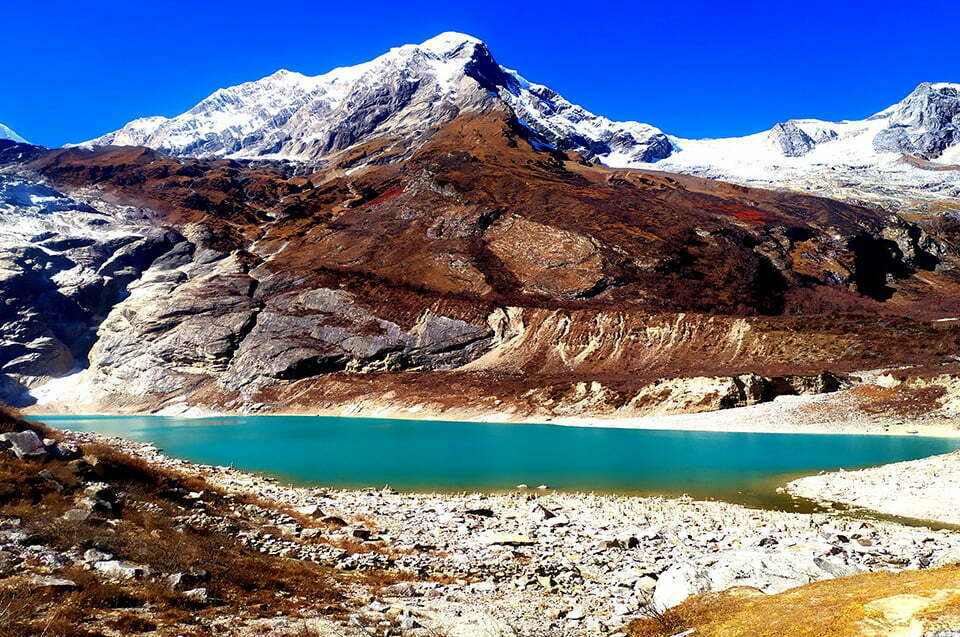







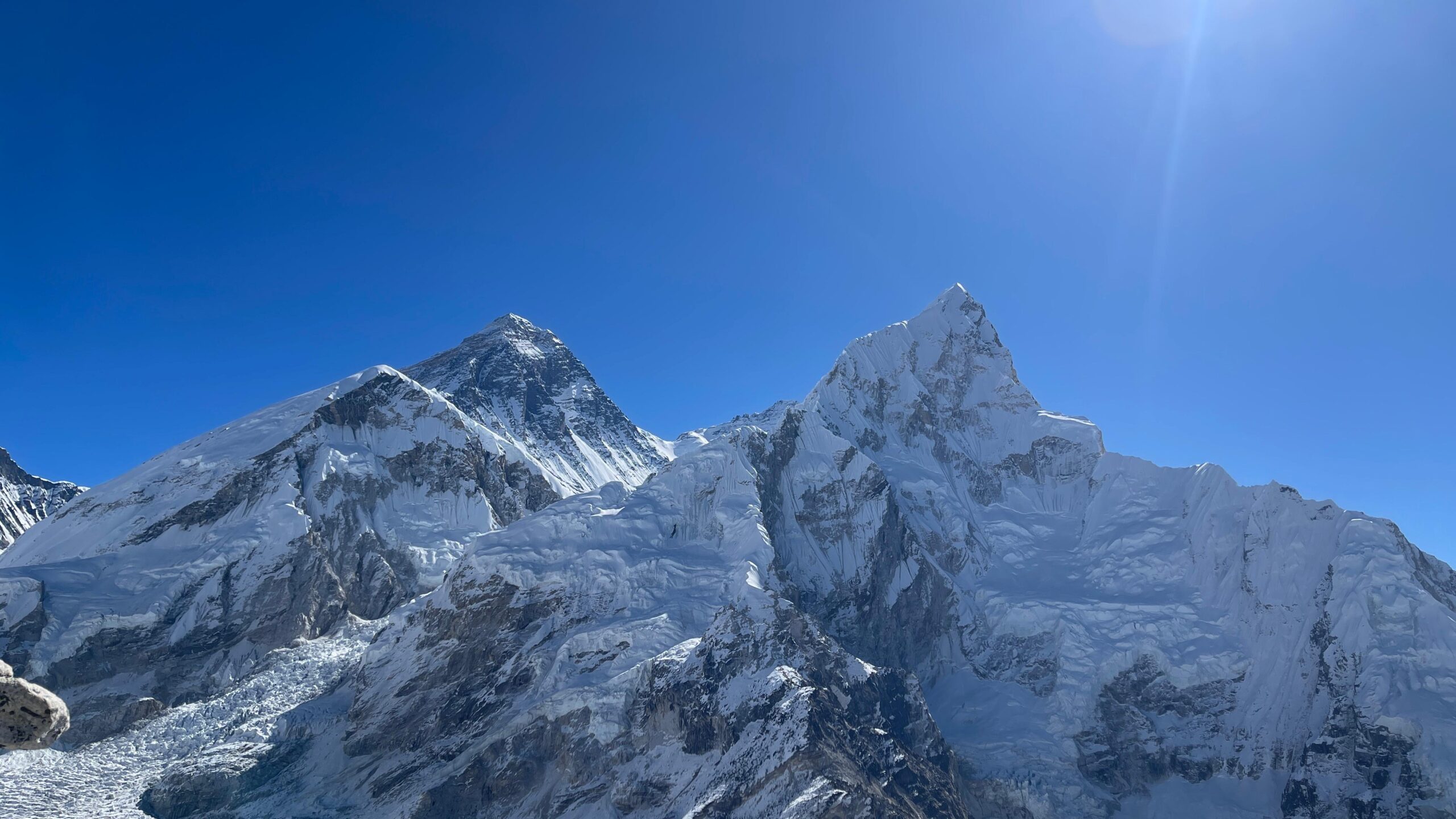
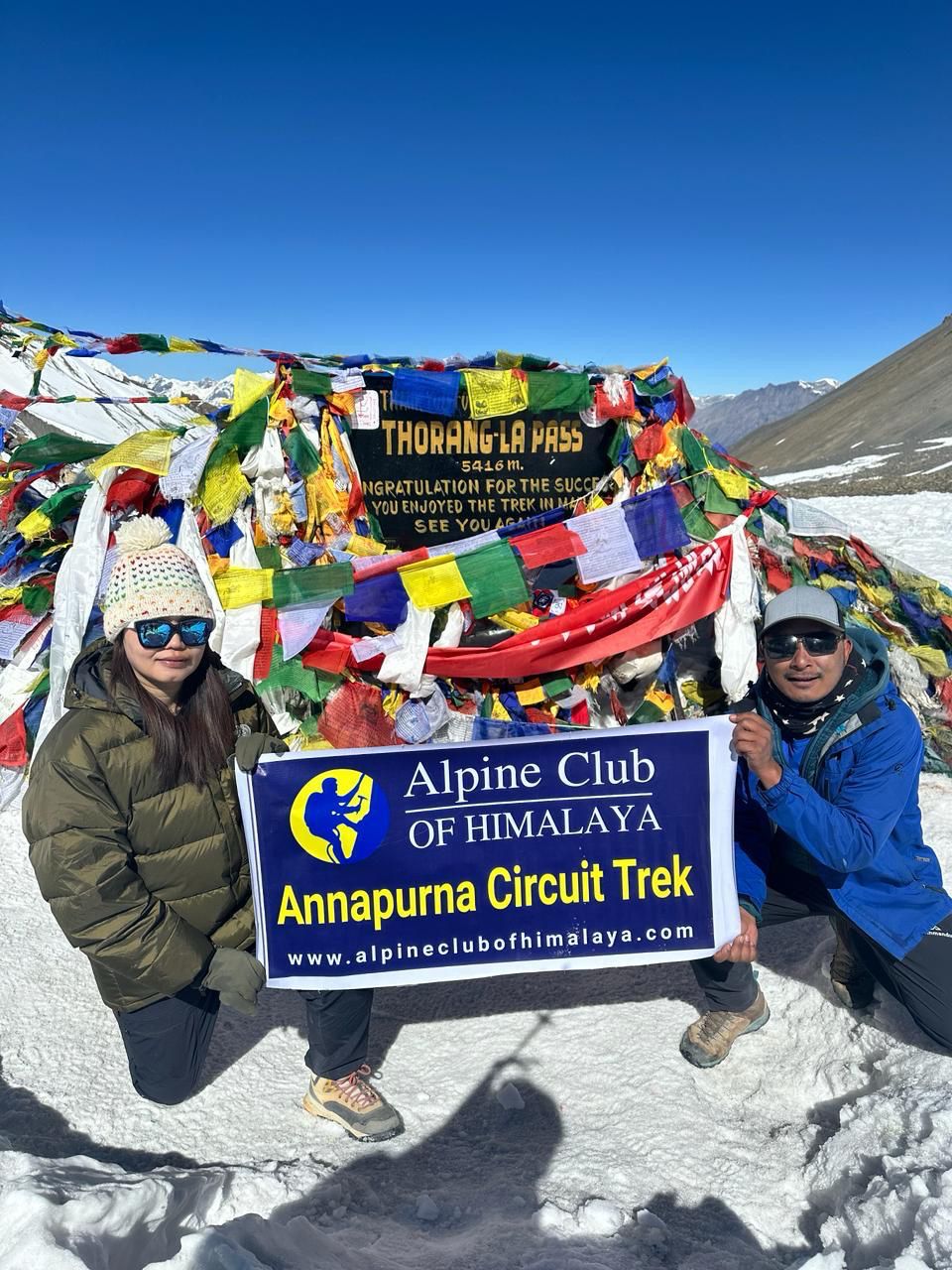
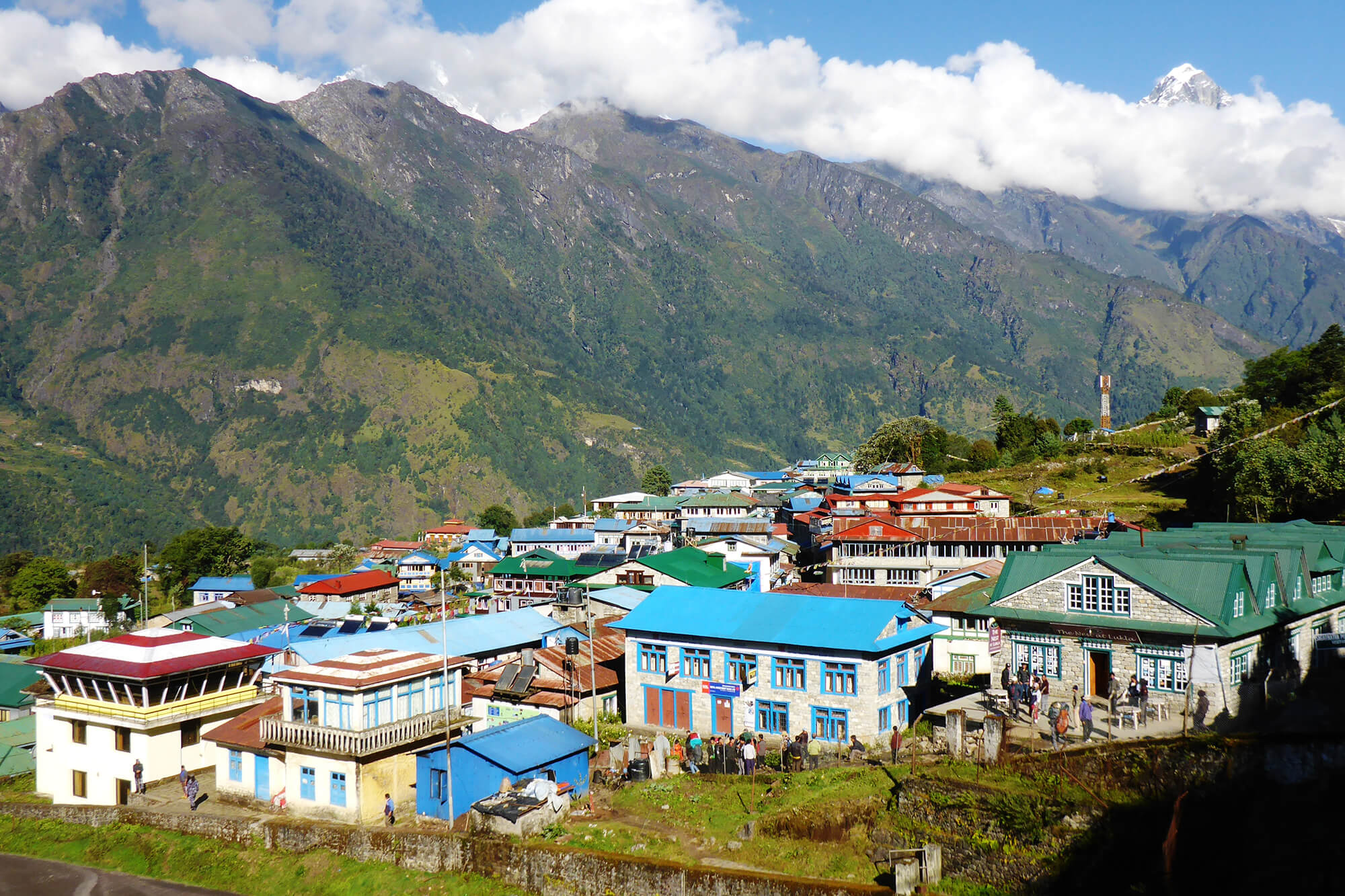
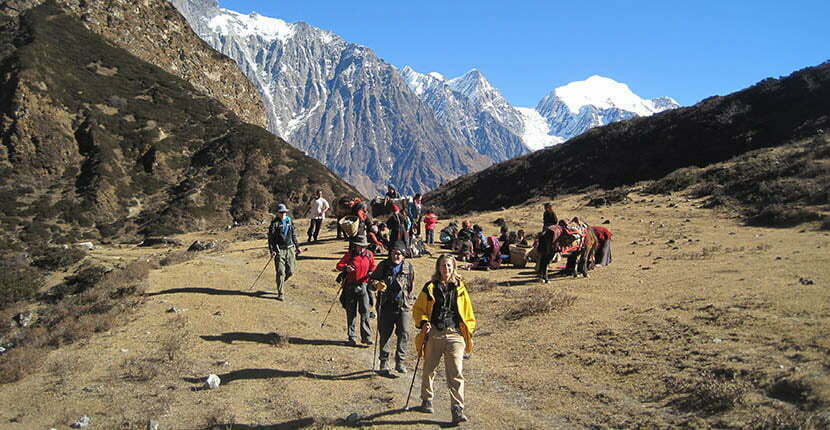
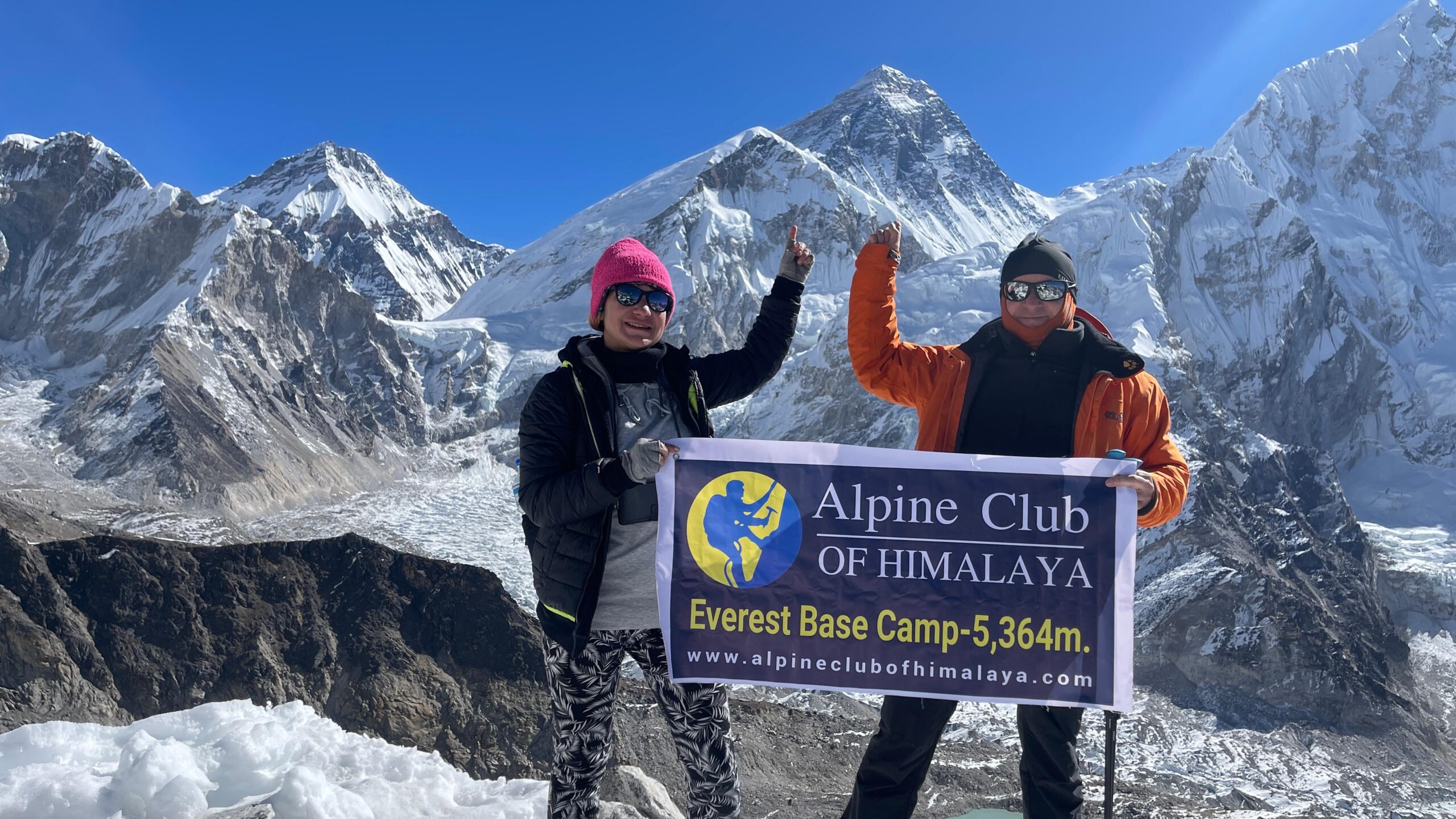
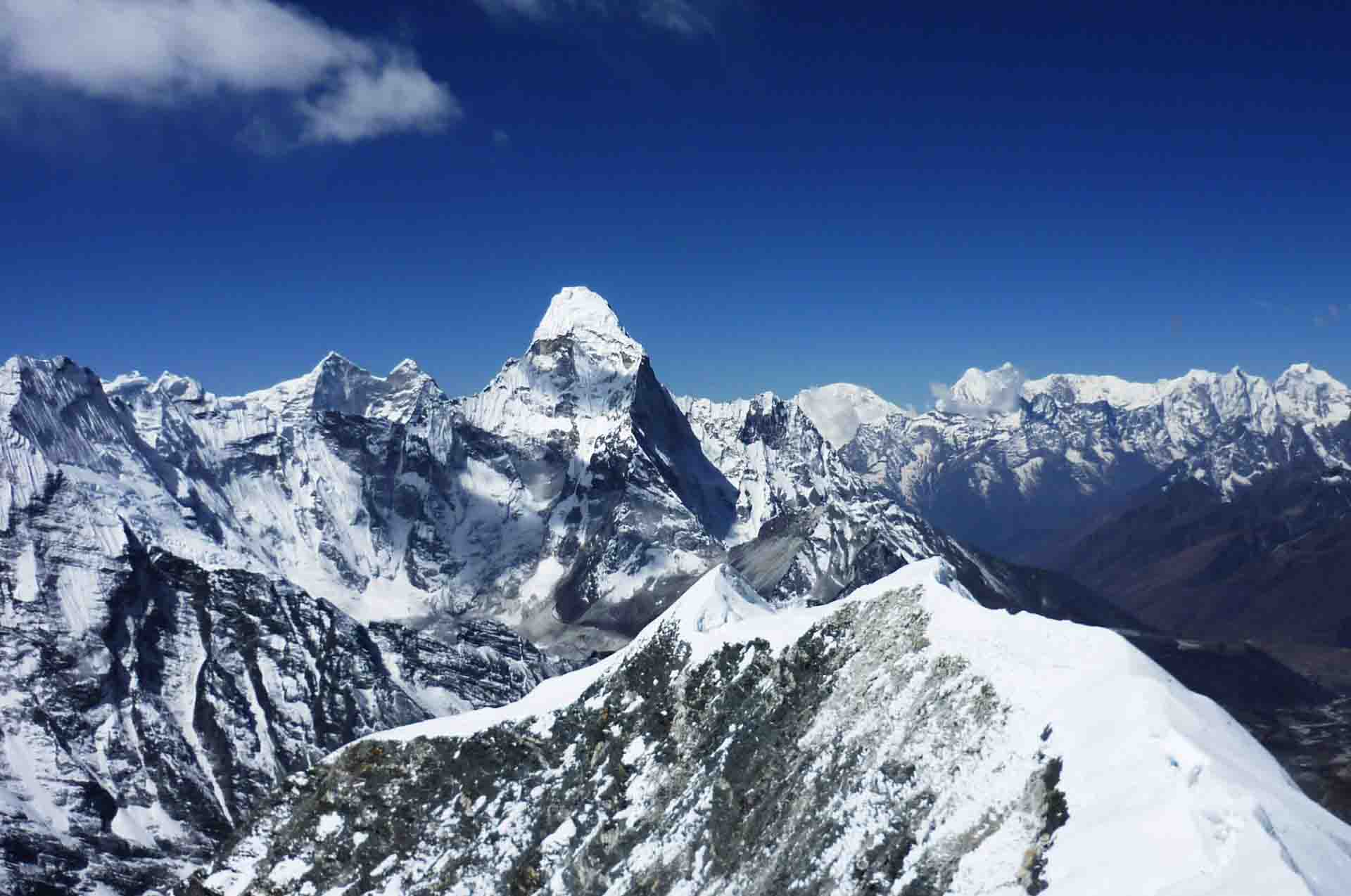
Write a Review